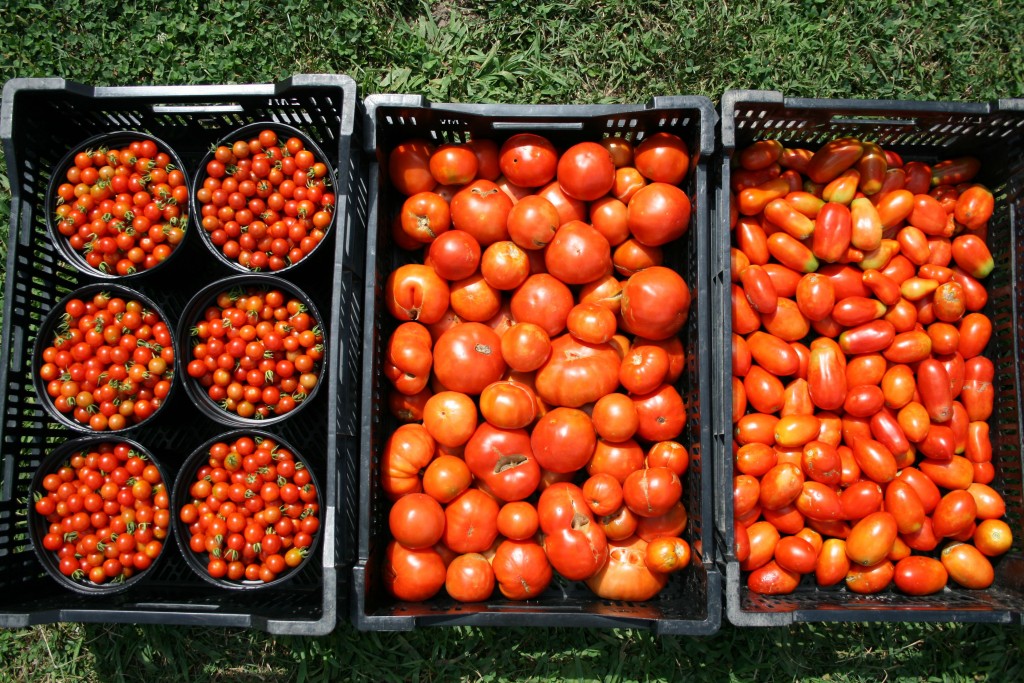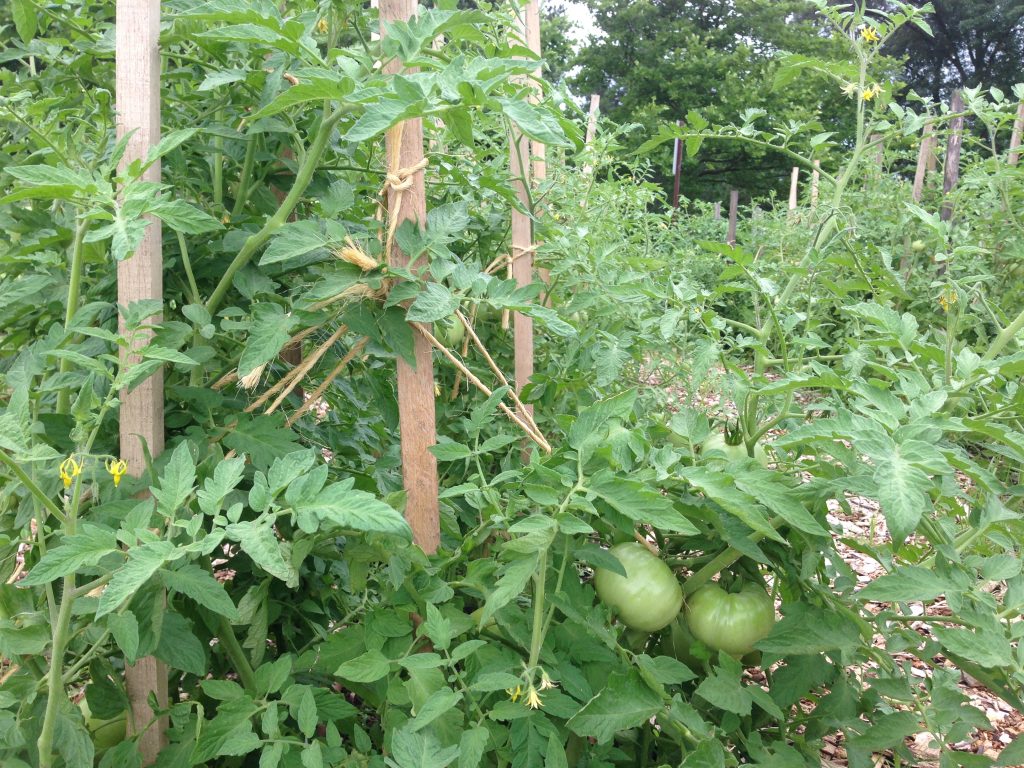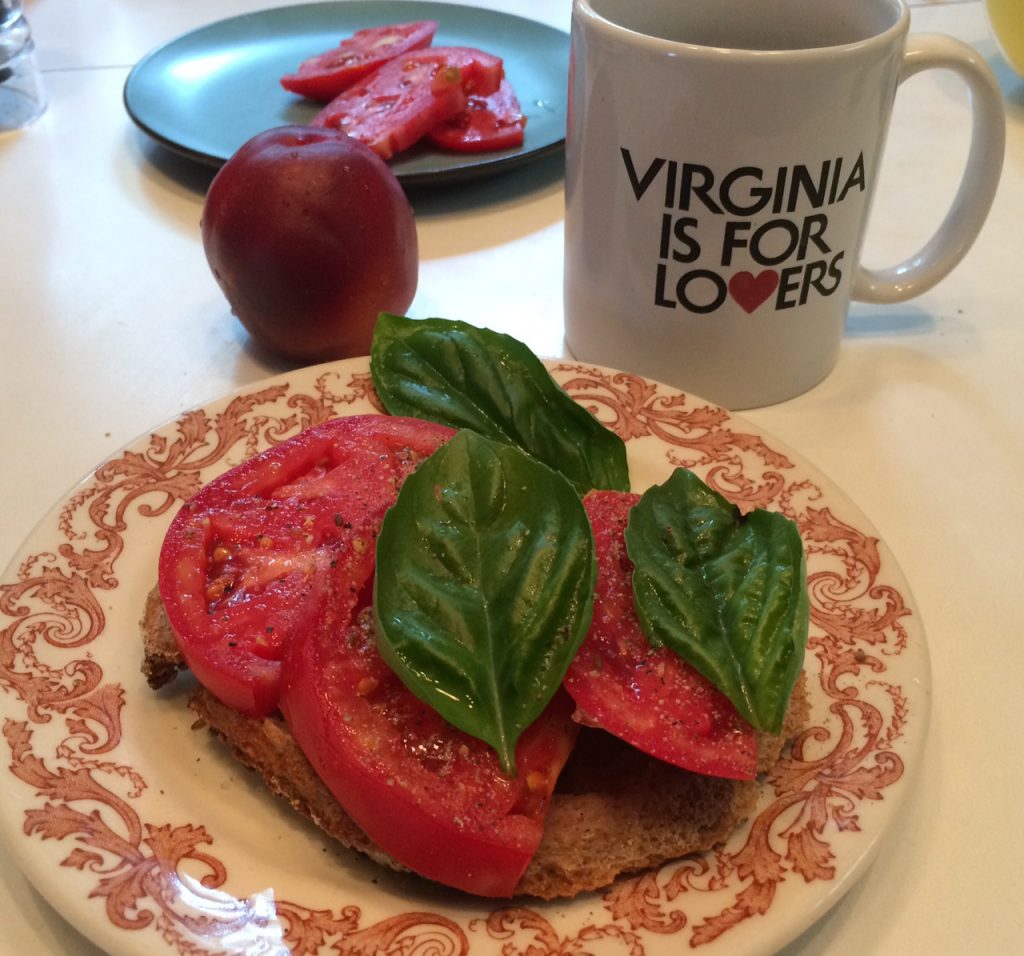Summer is for Tomatoes
Tomatoes are a favorite summer vegetable for many, and for good reason. There is nothing like a sweet juicy tomato fresh off the vine in the middle of July!

We grow several different types of tomatoes in the Community Kitchen Garden. So many tomatoes, so little time! This photo is from last year’s harvest, but ours should be ripening soon.
Tomatoes are a perfect vegetable for beginner gardeners because they are so easy to grow, and there are so many types and varieties to choose from. You can start seeds indoors, or you can buy a small plant that’s ready to go straight in the ground. I usually plant my tomatoes in the last week of April, after the average last frost date for our area because tomatoes are tender and will die if exposed to freezing temperatures. Once planted, tomatoes need to be caged, staked, or trellised in some way. Keeping tomato plants up off the ground will increase air flow, and therefore discourage diseases, and make it easier to harvest the scrumptious fruit!

Volunteers working in the Community Kitchen Garden this spring staked and tied the plants, not once, but twice to keep them up off the ground.
Some think that tomato plants should be pruned, by pinching off the suckers. The suckers are little shoots that grow from the branch crotches, or where the lateral branches grow out of the main stem. These suckers will grow into full size branches if left, but they will remain weaker than other branches and produce smaller fruit. It’s thought that pruning the suckers out will divert energy back to the main branches and increase fruit size. Your tomato plants will produce tomatoes either way. But it could be a fun experiment to prune suckers on some plants and leave them on others, then compare.
Your tomatoes will flourish with a little compost, organic fertilizer, sun and water. But there are a few pests and diseases that can hurt your precious plants. The two we most often see in the Community Kitchen Garden are the tomato hornworm and blossom end rot. Tomato hornworms are large green horned caterpillars that can eat your plants down to a stick in a matter of hours. They are very large but can blend right in with the foliage of the plant. If you find that your tomato plants now look like twigs, look really hard, and you might just find one. If you fine one covered in parasites though you can leave it, the parasites will do the job of removing them for you. Blossom end rot, on the other hand, is a physiological disorder that is a result of calcium deficiency in the soil. This issue is sometimes only temporary and can correct itself.
Here is a list of our favorite tomato varieties here in the Community Kitchen Garden: ‘Jasper’ cherry tomato, ‘Granadero’ Roma tomato, ‘San Marzano’ Roma tomato, ‘Cherokee Purple’ heirloom tomato and ‘Beefsteak’ tomato.
I don’t know about you, but I could really go for a good old tomato sandwich right now!

A tomato sandwich made with local tomatoes from the farmers market, with basil. Tomatoes typically become widely available at Richmond farmers markets right around July 4.